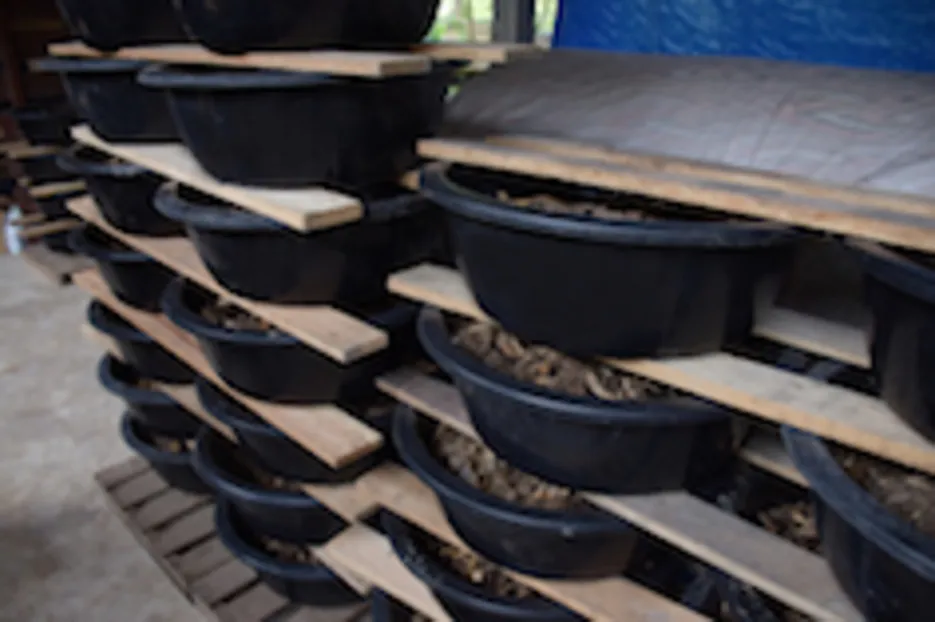 மீண்டும்
மீண்டும்

Vermicompost, the earthworm cast or excreta is an excellent nutrient-rich organic fertilizer and soil conditioner. The earthworms which eat organic matter are used to produce Vermicomposts like Eisinia foetida, the red worm or the red wriggler and Lumbricus rubellus. Vermicompost is a very cheap and environment-friendly substitute of the costly and harmful chemical fertilizers. Vermicompost improves soil tilth, aeration and the beneficial microbial content. It contains about 5 times Nitrogen, 6 times Phosphorus and 4 times potassium more than a well-decomposed FYM. Vermicompost reduces the evapotranspiration losses from the field, incidence of diseases, insect- pests and weeds. The crop exhibits good germination percentage and high product quality.

Vermicomposting units should have proper aeration and drainage facilities with Moisture content 40-50%, temperature-28-30°C and provision of shade. Vermicomposting can be done in pits, tanks, floor, wooden racks etc. these should be first lined with a plastic sheet so that nutrients may not leach down.


The most commonly used vermicomposting unit is the plastic Vermibed which is 9 feet long, 4 feet broad and 2.5 feet high costing about ₹ 3500/ bed. Vermibeds are fixed above the land surface providing a little slope. Drainage hole should be on the lower side of the land. The first layer of straw is put in the bed, then neem leaves. Moist with water. Add a week old cow dung (approximately 6-7 quintals). Cowdung is mixed with clean field soil or Rock phosphate in 3:1 ratio. Sprinkle with water. Then put about 5 kg of earthworm. Cover with straw. Sprinkle water. Finally, cover with wet jute bags. Do not fill the vermicompost beds upto the top, always leave a 4 inches gap from the upper side. Watering should be regularly done: once in 2-3 days during winters, daily in summers, no watering is required during the rainy season. Leave the earthworms in the Vermibeds undisturbed as far as possible. Vermicompost gets ready in about 3 months.


Finally, during harvest, it appears like dark brown or blackish tea or coffee powder. Stop watering about a week prior to harvest. Expose the Vermibeds to sunlight or simply hang a light source above it, the photosensitive earthworms will move deep inside the bed. Or dig a small pit in the bed and put some cow dung, earthworms from all sides of the bed will rush towards cow dung to eat it. Scrap the vermicompost with a small hand garden rake. Pass this vermicompost through 2 mm sieves and fill in polythene packets. The leftover earthworms in the bed can be used again with the same procedure. The second time the vermicompost will be ready in two and a half months, the third time in 2 months, then after every 45-60 days, we can harvest the vermicompost.
Thus in a year, we can have 4-6 production cycles of vermicompost. For every one quintal of cowdung, we can harvest upto 70 kg of vermicompost. The liquid extract obtained through drainage pipe of vermibed is called vermiwash. It is an excellent liquid fertilizer with macro nutrients, micronutrients, metabolites, enzymes and vitamins beneficial for the plant growth. Farmers can do Vermicomposting for their own farms as well as commercially. Vermicompost packets are sold in the market @ ₹10/ kg and Vermiwash @ ₹ 200-300/ litre.








